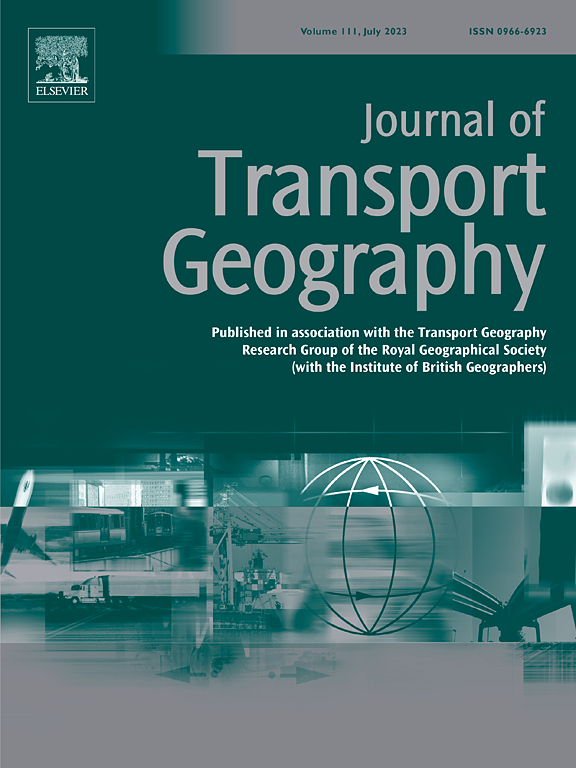探索影响人们对自动驾驶公交车态度和意图的因素:来自英格兰东北部的实证证据
IF 5.7
2区 工程技术
Q1 ECONOMICS
引用次数: 0
摘要
本文提供了一段深刻的旅程,以了解英格兰东北部的游客如何感知传统和新兴的自动公交服务并与之互动。我们的研究采用综合方法,通过在线问卷调查从417个地区的受访者那里收集数据,整合了定量、定性和空间数据点。这种方法不仅揭示了人们对公共交通的微妙态度,还揭示了自动公交(AB)服务的潜在影响和接受程度,这是塑造未来城市交通的基本要素。该叙述旨在(i)确定当前的社会人口集群及其旅行行为,(ii)分析对公共交通的看法,重点是公共汽车服务,(iii)发现对AB系统的态度,(iv)确定旅行转向AB的可能性。本文章由计算机程序翻译,如有差异,请以英文原文为准。
Exploring the factors shaping attitudes and intentions towards automated buses: Empirical evidence from Northeast England
This paper presents an insightful journey into understanding how travellers in the Northeast England perceive and interact with both conventional and emerging automated bus services. Employing a comprehensive methodology, our research scrutinizes data collected from 417 regional respondents via online questionnaires, integrating a blend of quantitative, qualitative, and spatial data points. This approach not only uncovers nuanced attitudes towards public transportation but also sheds light on the potential implications and acceptance of automated bus (AB) services, a fundamental element in shaping the future of urban mobility. The narrative aimed at (i) identifying present socio-demographic clusters and their travel behaviour, (ii) analysing perceptions regarding public transport with an emphasis on bus services, (iii) discovering attitudes towards AB systems and (iv) establishing the likelihood of a travel shift towards ABs.
The quantitative analysis applied Multiple Correspondence Analysis, unveiling five distinct socio-demographic clusters: (1) full-time employed, car-dependent individuals; (2) flexibly working individuals with mixed travel modes; (3) retired, car-dependent persons; (4) unemployed individuals primarily relying on walking and bus services; and (5) employed students utilizing various public transport and active travel modes. Furthermore, Categorical Principal Component Analysis revealed four key attitudinal components influencing bus service perceptions: (a) safety, quality, and comfort; (b) accessibility and availability; (c) cost and reliability; and (d) punctuality and preferences for alternatives. The qualitative dimension covered content and sentiment analysis on responses to open-ended questions about automated buses. This analysis highlighted mixed sentiments, with 56 % positive and 44 % negative mentions. Key connotations with automated buses included expectations of reduced accidents and safer roads, enhanced reliability and frequency of services, potential job losses, diminished social interaction, and concerns over personal security. The study culminates in a spatial analysis, synthesizing the socio-demographic clusters, attitudinal components, and a comparative assessment of traditional versus automated bus services.
求助全文
通过发布文献求助,成功后即可免费获取论文全文。
去求助
来源期刊

Journal of Transport Geography
Multiple-
CiteScore
11.50
自引率
11.50%
发文量
197
期刊介绍:
A major resurgence has occurred in transport geography in the wake of political and policy changes, huge transport infrastructure projects and responses to urban traffic congestion. The Journal of Transport Geography provides a central focus for developments in this rapidly expanding sub-discipline.
 求助内容:
求助内容: 应助结果提醒方式:
应助结果提醒方式:


